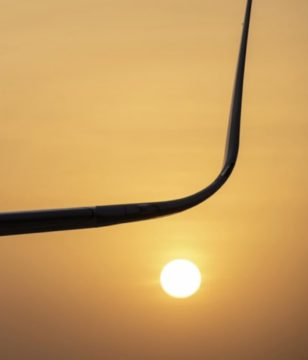Jacopo Prisco at CNN:
 What caught your eye the last time you looked out of your airplane window? It might have been the winglet, a now ubiquitous appendage at the end of each wing, often used by airlines to display their logo and put their branding in your travel pictures.
What caught your eye the last time you looked out of your airplane window? It might have been the winglet, a now ubiquitous appendage at the end of each wing, often used by airlines to display their logo and put their branding in your travel pictures.
But the winglet isn’t there for marketing purposes alone — it actually saves fuel. On average, an aircraft equipped with them can use up to 5% less fuel, and for a typical Boeing 737 commuter plane that can mean 100,000 gallons of fuel a year, according to NASA. The collective savings for airlines are in the billions of dollars.
They do so by reducing the natural vortices that form at the wingtips, which can be so strong that smaller aircraft can even flip in mid-air when crossing the wake of very large planes. The effect is so obvious that aerodynamicists were thinking about it even before the Wright brothers completed their first flight. The widespread adoption of winglets, however, is far more recent.
More here.
